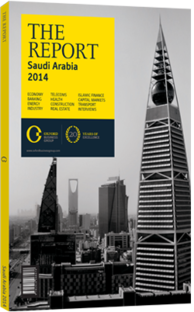Thinking outside the box: New technologies could be key to increasing production and foreign investment in the sector
Given its status as the world’s largest oil producer, it is perhaps unsurprising that Saudi Arabia is also a leading centre for energy-related research and development (R&D). The Saudi Arabian Oil Company (Saudi Aramco) has undertaken a major expansion of its research activities in recent years, with a focus on producing cleaner fuels, reducing carbon emissions and improving extraction rates. Foreign firms have been applying experimental technologies to extraction in the Kingdom, as well as opening research centres there.
R&D ACTIVITIES: In 2009 Saudi Aramco established the King Abdullah University of Science and Technology in Thuwal on the Red Sea coast. The university operates a clean combustion research centre, in addition to other research focused on non-energy issues, as well as partnerships in fields like energy and water with international universities, like Peking University, Oxford and Stanford. As Patrick van Daele, CEO of Shell in Saudi Arabia, told OBG, “The petrochemicals industry is an excellent example of how Saudi Arabia can diversify its economy and create jobs by keeping more of the value-added process within the Kingdom.”
In Saudi Arabia, Saudi Aramco also directly operates two wholly owned research centres, both in Dhahran. The first is its Advanced Research Centre at the Exploration and Petroleum Engineering Centre, which concentrates on upstream activities. Next is the Research and Development Centre, which focuses on three key areas: removing sulphur from crude, the production of clean fuels and managing the release of carbon.
In 2011 Chevron and Saudi Aramco signed a five-year R&D agreement that includes a project for mitigating iron sulphide build-up in production wells. In January 2014 US oil services firm Halliburton and Saudi Aramco inaugurated a new research centre at King Fahd University of Petroleum and Minerals that focuses on improving productivity at conventional and unconventional reservoirs. Since 20016 fellow oil services firm Schlumberger has operated a Carbonate Research Centre in Dhahran that focuses on carbonate petrophysics, stimulating production from carbonate reservoirs and improving recovery. “The research community here has worked hard to develop local expertise that makes Saudi Arabia an attractive location for foreign firms working in oil and gas, refining and petrochemicals, power, water treatment and advanced computing,” Halim Hawid Redhwi, CEO of Dhahran Techno Valley, told OBG.
INTERNATIONAL NETWORK: Saudi Aramco has also worked to establish a global research network. In 2012 it opened its first global research centre at Delft University of Technology in the Netherlands. In December 2013 it inaugurated the first of three planned centres in the US. The facility is located in Cambridge, Massachusetts, which is home to several leading universities, and will conduct research in several areas, including reservoir modelling and boosting crude extraction rates. The remaining two centres, to be opened in 2014, will be located in Detroit and Houston. The Detroit facility will concentrate on next-generation liquid fuels and managing carbon emissions, while the Houston centre will have a range of upstream-focused research.
In January 2013 the company signed an agreement with the Korea Advanced Institute of Science and Technology for an institute in South Korea, with a focus on reducing or capturing carbon dioxide emissions from fuels. Two months later in March Saudi Aramco opened a fuel research centre in France in collaboration with French energy research institute IFP Energies Nouvelles.
EXPERIMENTING: Energy firms are putting new technologies to the test on the ground. One major examples of this is taking place in the Neutral Zone on the Saudi-Kuwait border, where since 2009 Chevron has been applying steam-flooding techniques to the zone’s Wafra field to boost extraction of extra-heavy oil reserves. The company believes it could allow for half or more of the reservoir to be extracted, compared to 5-10% using conventional technology. Results from the project so far have reportedly been encouraging. If successful, this project could help open the door for the recovery of large volumes of extra heavy oil elsewhere.
You have reached the limit of premium articles you can view for free.
Choose from the options below to purchase print or digital editions of our Reports. You can also purchase a website subscription giving you unlimited access to all of our Reports online for 12 months.
If you have already purchased this Report or have a website subscription, please login to continue.

